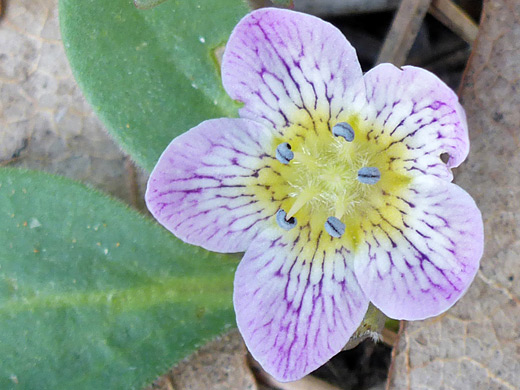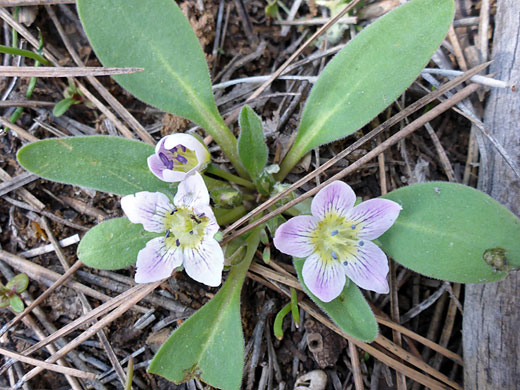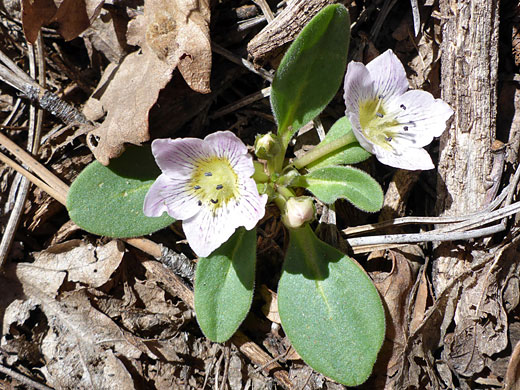Hesperochiron Pumilus, Dwarf Hesperochiron
Plants > Wildflowers > Boraginaceae > Hesperochiron Pumilus

Pink/white petals with purple veins; hesperochiron pumilus, Northgate Peaks Trail, Zion National Park, Utah
Common name:
Dwarf hesperochiron
Family:
Scientific name:
Hesperochiron pumilus
Main flower color:
Range:
Arizona, Utah and Wyoming, and all states to the west
Height:
A few inches
Habitat:
Woodland, meadows, hillsides, rocky openings; generally wet locations, from 1,500 to 10,000 feet
Leaves:
Narrowly oblong to oblanceolate, up to 3 inches wide and half an inch wide
Season:
April to July
Leaves of hesperochiron pumilus form a basal rosette, growing close to the ground; plants typically produce between two and ten. The leaves have unlobed, ciliate edges but are otherwise hairless, and a narrow base, tapering to the petiole. There are no stems; flowers (between one and eight per plant) are held atop short, leafless stalks, angled upwards or at an angle.
Flowers have a five-lobed calyx, the lobes somewhat different in size, and usually lightly hair-covered. The five, rounded petals are generally white, but often tinged purple or light blue, and crossed by darker purple veins. The flower center is yellow; from here rise five stamens, with yellow-white filaments and bluish anthers, and a hairy style topped by two stigmas. The stamens are also different in length, though all are quite short, included within the corolla. Flowers are around one inch in diameter.
Flowers have a five-lobed calyx, the lobes somewhat different in size, and usually lightly hair-covered. The five, rounded petals are generally white, but often tinged purple or light blue, and crossed by darker purple veins. The flower center is yellow; from here rise five stamens, with yellow-white filaments and bluish anthers, and a hairy style topped by two stigmas. The stamens are also different in length, though all are quite short, included within the corolla. Flowers are around one inch in diameter.
All Contents © Copyright The American Southwest | Comments and Questions | Contribute | Site Map




